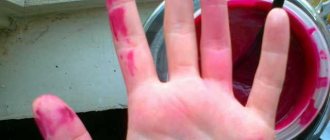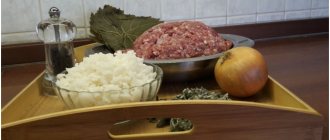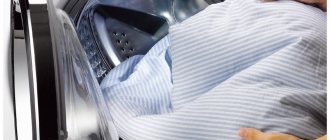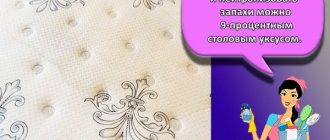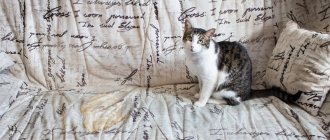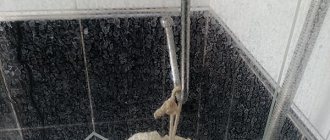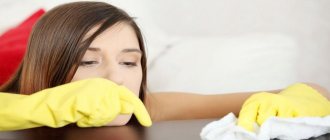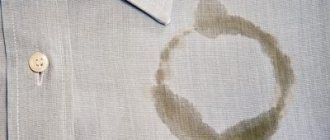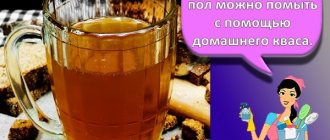Natural wood parquet flooring is not only an environmentally friendly and expensive coating. The unique beauty of wood will always delight the eyes of its owners and their guests, but only if you have the knowledge of how to properly care for and maintain the cleanliness of such floors. We think that many housewives will be interested in this topic, especially since some of them are faced with the question for the first time, for example, how to remove a stain from parquet or what are the features of caring for parquet.
How to properly clean parquet from stains
As you have already understood from all of the above, natural parquet is, to some extent, a finicky material that requires special, careful care. And if everything is more or less clear with daily cleaning and maintaining its cleanliness, then not many people know how to properly clean parquet from stains. Let's start with the fact that dirt on your wooden floor can come from different origins. From the easiest ones - household ones, to more complex ones, for example, after repairs or other difficult periods in your life. In families with small children, you can often find not only puddles of their feces on the floor, but also their colorful “arts.” By the way, the urine of domestic animals, namely cats, has not only an unpleasant and persistent odor. The biochemical elements contained in its composition can ruin not only your beautiful and expensive parquet floor, but also many of your other things.
IMPORTANT! When getting pets at home, you should always think in advance about all subsequent and possible problems associated with their maintenance. To prevent your home from smelling of cat urine, you should sterilize your pets on time, and also prepare all the conditions for them to walk and use the toilet at home.
Removing stains from parquet
In addition to fat, there are a lot of other contaminants, so it is worth knowing the features of removing contaminants of different origins. The main rule is to act as quickly as possible. Once a stain on your parquet gets old, it becomes much more difficult to remove.
Types of pollution and ways to combat them:
- Chewing gum is a nuisance, but removing it from your hardwood floors is easy—you just have to freeze it. To do this, cover the chewing gum with a plastic bag and put ice on top. Once frozen, it will peel off easily. Residues are removed with a soft sponge;
- If wax gets on the parquet, it is removed in the same way as chewing gum;
- Ink - they are cleaned using a solution of warm water with any detergent;
- Pencils and markers are difficult to remove pollutants. If the traces are fresh, they are removed with a solvent (white spirit). To do this, moisten a microfiber cloth with it and wipe the floor with light movements. If the stain is thoroughly dry, it will need to be soaked. To do this, place a rag soaked in solvent on the contaminated area for 5-10 minutes;
Nail polish remover
- Urine – it has the unpleasant property of quickly being absorbed into the coating. If the stain is old, you will have to wash it out with a 10% solution of bleach and water, but if it is fresh, warm water with detergent will do;
- Paint - it all depends on its base. Fresh paint is immediately wiped off with a dry cloth, and residues are removed with a solvent. Moreover, it is recommended to use one that is intended for use with this type of paint;
- Nail polish is an effective remedy. However, it must be used carefully, since the liquid is caustic and can damage the protective layer on the parquet.
The main rule when cleaning this flooring is accuracy and thoroughness.
Acetone
Removing stains from parquet using improvised means
Cleaning grease stains and other contaminants on parquet will be much easier if you get down to business in a timely manner. In this case, you do not need the help of special expensive tools. You will probably have all the necessary ingredients for cleaning in your household.
- You can remove greasy stains from parquet with a liquid solution that every housewife has in her kitchen, namely dishwashing gel. Dampen a sponge with warm water and an undiluted detergent such as Fairy, then gently wipe the greasy surface of the floor with it. Upon completion of cleaning, walk over the treated parquet with a damp cellulose cloth, and then with a clean, dry rag.
- Removing old grease stains from parquet flooring is not an easy task. And even more so if the stain has become covered with a layer of ingrained dirt over time. If you scrape off such a dirty layer with any sharp device, there is a possibility of damage to the wood. Rather than spoil the surface of an expensive wooden surface, it is better to try cleaning it with solvents. The safest of them is denatured, technical or ethyl alcohol. As a last resort, you can try using vodka, although it is unlikely to overcome stubborn outdated stains.
- Removing varnish, oil paint and other persistent dyes is no different from the above. Except that fresh paint stains can be easily wiped off with a simple rag. But if you have allowed the dye to dry completely, you will only have to wash it with solvents. The top layer of paint can be carefully removed with a sharp blade; the remains will have to be washed off using cotton pads soaked in white spirit, acetone, pure gasoline, or using nail polish remover.
- You can try to clean off traces of markers, felt-tip pens and traces of colored plasticine with alcohol.
- Contaminants from chewing gum, plasticine or wax drops from candles are removed by freezing. To do this, apply an ice pack to the contaminated area. Once the sticky substance has completely hardened, it can be easily scraped off with a sharp object. If after this there are particles of dirt left on the surface, place paper napkins on them and iron them with a hot iron.
- Blood stains can be easily washed off with cool water and a sponge; in difficult cases, add a little ammonia to the water.
- Black lines from the rubber sole can be easily removed by rubbing them with a regular school eraser.
- It is better to remove urine of any origin, especially animal urine, as quickly as possible. To prevent an unpleasant odor from remaining, you can add a little table vinegar to the cleaning solution. Acid kills most harmful bacteria, as well as mold spores.
Parquet care
Cleaning wood flooring is not a difficult task at all. Every day you need to sweep the floor with a soft bristle brush, vacuum regularly using a special attachment, and immediately blot any accidentally spilled water with a paper towel or slightly dampened rag. With a high-quality varnish coating, you can carry out wet cleaning without fear, avoiding the formation of puddles. Excessive wetting of parquet with water will cause it to quickly deteriorate. There are also recommendations that need to be followed:
- If possible, use special compounds made by the same manufacturers as the parquet.
- Wipe off any resulting shoe stains with a well-wrung out soft cloth.
- Do not use gasoline or various abrasives as cleaning agents.
- Equip furniture with soft felt or felt heels and chairs with special parquet rollers.
- Do not use a washing vacuum cleaner, as the coating will be damaged by water.
In addition, you should not use soap solutions to clean the floor. After the soap, whitish stains remain, which will also have to be removed.
Summary
At this point, you understand how to combat the main types of stains on parquet flooring and how to clean old parquet flooring before scheduled restoration.
Caring for parquet and periodically removing stains from it is a real “jewelry” hard work. Because in addition to taking care, it is important not to overdo it.
Take care of your flooring - and not only your children, but also your grandchildren will say “thank you” for it. Parquet is a luxurious gift for many generations.
How to remove stains on parquet, laminate, linoleum? Plus Gender
How can you remove grease stains from oak parquet yourself?
Answer: To remove greasy stains from oak parquet, it is recommended:
- Wipe the stain with turpentine (with a cloth soaked in turpentine), then with a damp cloth. If necessary, repeat the process several times.
- Sprinkle the stain with magnesia powder, lightly rub into the stain, let stand, sweep away the powder. Repeat if necessary. Magnesia powder is a white powder that is magnesium oxide or magnesium salt. If you don’t have burnt technical or pharmaceutical/medicinal magnesia on hand (magnesium sulfate in powder), then tooth powder, one of the main components of which is MgCO3/magnesium carbonate (magnesium salt), will do.
- Use a mushy mixture of washing powder with warm water - rub into the stain, let stand (for several hours, periodically wetting), then scrub vigorously and finally wipe with a damp cloth. Repeat several times if necessary.
- Sprinkle the stain with talcum powder, or chalk, or magnesium powder, cover with several layers of gauze and iron with a hot iron.
- A fresh greasy stain on unvarnished parquet can be removed with the finest-grained sandpaper.
First of all, a lot depends on the grease stain itself and on the condition of your parquet. But in any case, your actions to clean the parquet from grease stains must be very careful.
So there are many methods, but I would not recommend using acids and sandpaper. After all, then you will have to reanimate the parquet itself.
And it is better to use soft and gentle products.
But I'll dwell a little on the fat itself. The fact is that fat can easily be converted into soap, or at least partially.
And those who know that the base of soap is a product of the interaction of fats and alkalis, understand that it is this method, and specifically the use of mild alkaline solutions, that allows you to get rid of greasy stains under mild conditions.
We recommend: How to install laminate flooring through a door frame?
This is how you can use baking soda.
And sometimes it’s enough to sprinkle the area with the grease stain and then carefully remove the used soda after a day.
You can use household adsorbents (for example talc). And here the actions are similar.
And of course, you can use purchased products.
Here is a line of such funds.
In fact, it is not so easy to remove a greasy stain from parquet, no matter what it is, especially since it is even more difficult to do it with oak than with softer wood species.
The thing is that fat penetrates a certain distance into the wood and changes its color, leaving a visible stain on top.
For this reason, all fat removal products break it down only from the surface, while fat remains inside and it turns out that the stain can only be discolored to some extent, which is not always good, since the stain itself remains, only its color changes.
To partially remove stains (namely fat), you can use several options:
- pour alcohol onto the stain, and then use a blotter to collect the fat dissolved in it
- mix dishwashing detergent with water and wipe the stain with a wet sponge several times, without wiping it dry for a while, then wipe dry
- pour rust solvent onto the stain, wait a while and collect the liquid with a blotter, repeating the procedure until the desired result
From the question you can understand that the varnish on oak parquet is completely or partially absent. Oily stains are not that easy to remove. If an oil stain is fresh, it can be removed faster than one that has already been absorbed into the wood.
You can buy a universal degreaser in hardware stores; it is intended not only for degreasing surfaces before painting, but also for removing greasy stains (use according to the instructions). Read the composition carefully; it should not contain white spirit.
We recommend: Rotband gypsum plaster: how can you clean it from linoleum?
You can remove a greasy stain from parquet using borax, sprinkle it on the stain, cover with blotting paper or a soft cloth and iron with a hot iron.
Or apply clay slurry with the addition of vinegar to the stain; it is better to take white or gray clay. Leave the clay for a day, then remove it with a cloth soaked in diluted dishwashing detergent, then thoroughly clean the stain with a damp soft cloth. Oak parquet should not be washed with large amounts of water; it is better to wipe the stain several times with a slightly damp cloth or napkin.
It won’t work quickly, or rather, part of the work will not take much time, but waiting until the cleaning process is completed will take several hours.
First, wipe the oak parquet with a rag to remove dust and dirt.
Next, take washing powder (absolutely any, but for hand washing).
We dilute the powder with water (the water is warm, but not hot), but so that it turns out to be a “gruel”, now with this “gruel” we treat the surface with an oil stain. We wait two, or even three, hours, then remove the powder with a damp cloth.
This method is the most effective and proven from personal experience.
If traces of the stain remain, or the stain is not completely removed, you can use denatured alcohol (denatured alcohol)
They are used at the second and final stage of the fight against the stain.
I understand that stains are eaten in different ways, if these methods did not help, then only scraping will help, apparently the stain is old, the depth of penetration into the board is large.
